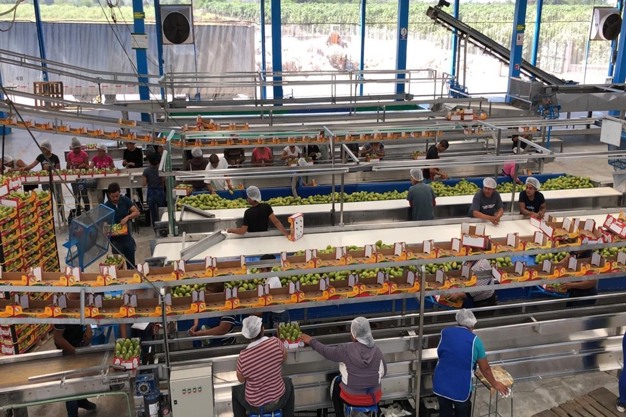Mexican mangoes continue to gain ground in the U.S. market, which is the destination for 90% of the exports of this product. With the 2024 season closing with 80 million boxes exported, the sector is consolidating its position as one of the main suppliers worldwide, while also still facing considerable challenges. Droughts in northern Mexico and the overall impact of climate change have taken a toll on both the quality and quantity of the production, although a favorable recovery is expected in the 2025 season thanks to the rains recorded in the central and southern parts of the country.

In this new season, producers are expecting an increase in the export volume of between 10 and 15%, as long as the weather conditions remain favorable and the U.S. demand continues to rise. "We are seeing more interest in mangoes, especially when the supply falls," says José Ángel Crespo, president of the Mexican EMEX association and marketing manager of Empaque Don Jorge, talking about the growing consumer preference for this fruit, even in a context of competition with other large exporters, such as Peru. Other markets, such as Japan, New Zealand and Australia, also import Mexican mangoes, although in smaller quantities due to specific treatment and certification requirements.
Mexico's variety and export methods allow it to compete in these markets, while its proximity to the U.S. facilitates land-based logistics, guaranteeing freshness and speed of delivery. Still, competition is strong, particularly with countries such as Peru, whose season coincides with the Mexican one.

The season hasn't been free of difficulties. The impact of climate change, especially droughts in the north of the country, have had an impact on the production and quality, although a better season is expected in 2025 thanks to abundant rainfall in the central-southern regions.
One of the biggest handicaps for EMEX's exports is the constant increase in production costs, influenced by the price of fertilizers, agrochemicals and labor, in addition to the annual 5 to 10% increase in logistics costs. "Thanks to the proximity to the United States, road transport is used for 99% of Mexican exports, minimizing the use of containers and facilitating logistics," says Crespo.
Although the European market has shown interest in Mexican varieties, maritime logistics and strict certification standards have limited their access. "Ataulfo mangoes are of interest in Europe, but the costs and transport time make it difficult to compete in this market," says Crespo, pointing out that the U.S. market will continue to be prioritized by EMEX.

Crespo says that "the mango ripening process is slightly affected by the hydrothermal treatment that is mandatory for exports to the United States, although it ensures that the product will meet the required standards without the quality being compromised. EMEX focuses on keeping a rigorous cold chain to extend the shelf life and mitigate the impact of these treatments."


With exports worth US$ 600 million in 2024, EMEX seeks to consolidate its position in the United States and take advantage of the opportunity presented by the shortage of mangoes in competing countries.
For more information:
José Ángel Crespo
Empacadoras de Mango de Exportación - EMEX
Tel.: +1 956 369 3510
[email protected]
www.mangoemex.com
